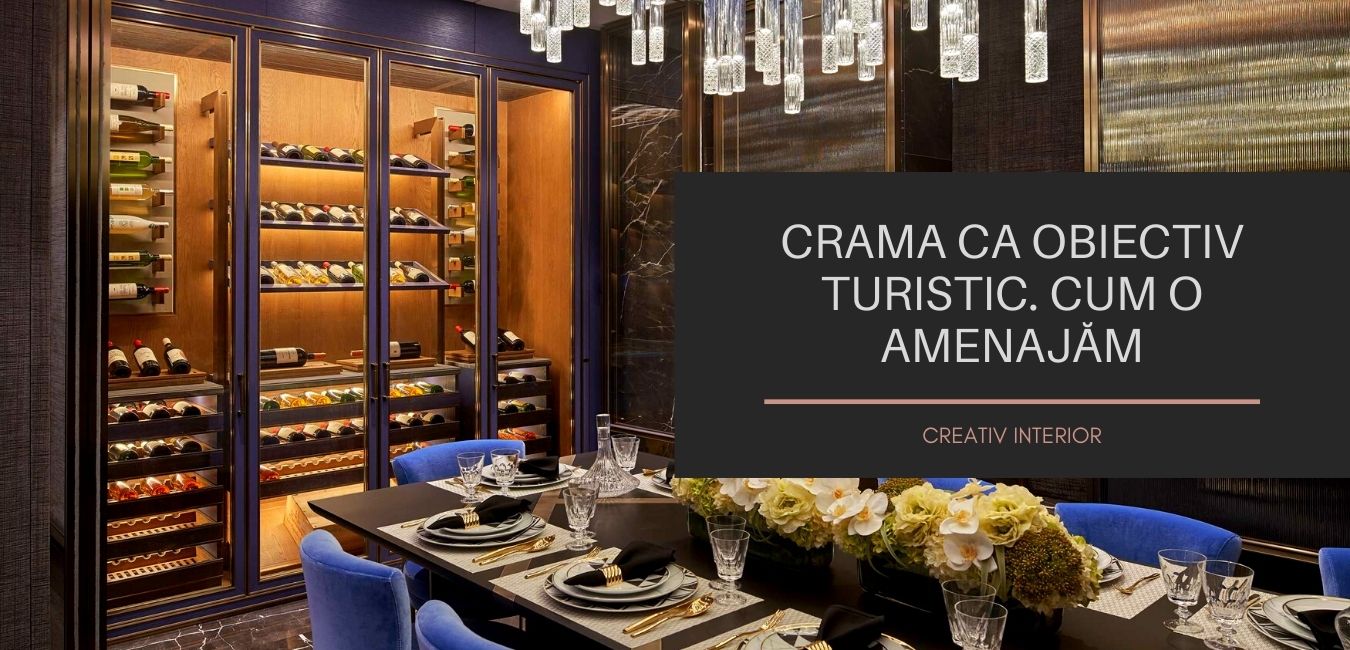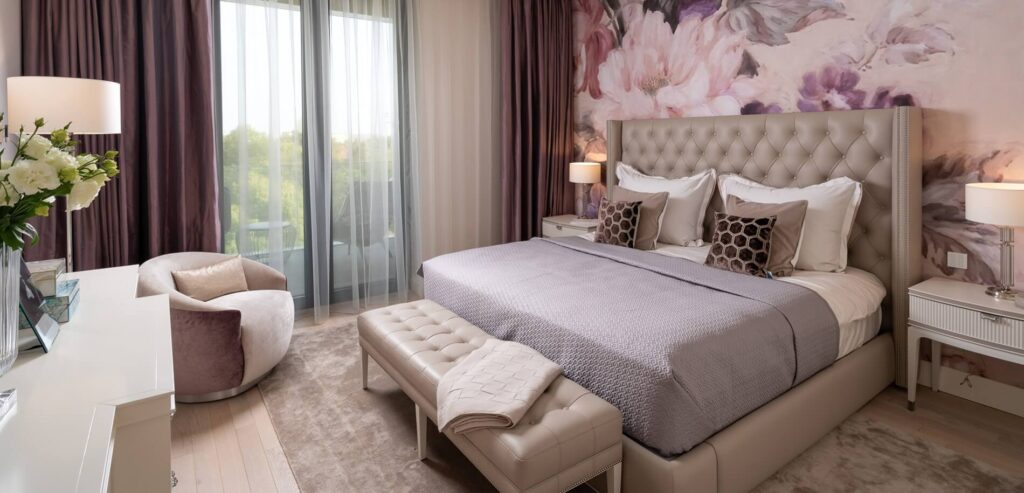In the past, the winery was a building or room at ground level in a high-rise building near the vineyard, where grapes were pressed, wine was prepared and stored, as well as work tools. In other words, the winery was a wine cellar. Over time, the wineries have acquired the status of tourist attraction, becoming points of attraction for wine lovers and more. Therefore, it is understandable the interest of winery owners to arrange them properly, to transform them from simple wine storage spaces into chic socializing places, where wine tastings and other fine drinks take place. In recent years, the concept of wine cellar-restaurant has expanded more and more, ie the place where alcoholic beverages and dishes are consumed, or the Wine Shop & Bar. In order to preserve the original specifics of this place, the wineries are often arranged in a rustic or traditional setting.
Mandatory requirements in the arrangement of the winery
Although the concept of the winery retains very little of its primary role today, for those who want to arrange a wine cellar for storage must first consider the conditions of temperature and humidity, because the wines can not be stored in improper conditions. The most important requirements are temperature, humidity, lighting, mobility and positioning. The optimum humidity level is in the parameters 50-80%. As for the temperature, it is recommended that it be maintained at 10-12 degrees. Temperature fluctuations, even small ones, are not recommended. It is known that wine is sensitive to light, therefore it is recommended to be kept in the dark or at most to have a low light, controlled even for short moments. There are also strict rules regarding the containers in which the wines are kept: the bottles must be full (otherwise the air oxidizes the wine) and placed horizontally, so that the corks are always moist inside the bottles. The supports on which the wine bottles are placed must ensure stability, because vibrations and movements of any kind affect the content of the bottles and ultimately the quality of the wine.
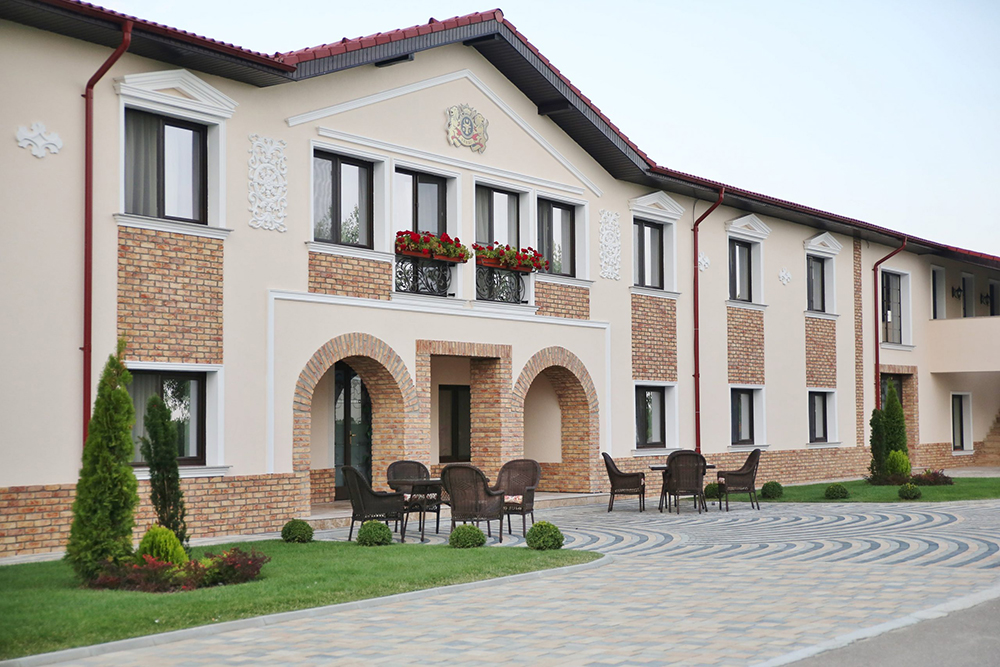
Project Creativ Interior – Domeniile Panciu
Why waterproofing in a winery is so important
In most cases, the cellars are located in the basement of buildings, so water infiltration and moisture are inevitable. Therefore, waterproofing is an essential step for these spaces to provide optimal conditions, not only for wine storage, but also in general operation. Keep in mind that this action is done before finishing and arranging the wineries themselves. For quality and long-lasting waterproofing, professional materials must be used to control humidity and prevent moisture. The access door to the cellar must also be properly insulated to prevent heat transfer from inside to outside.
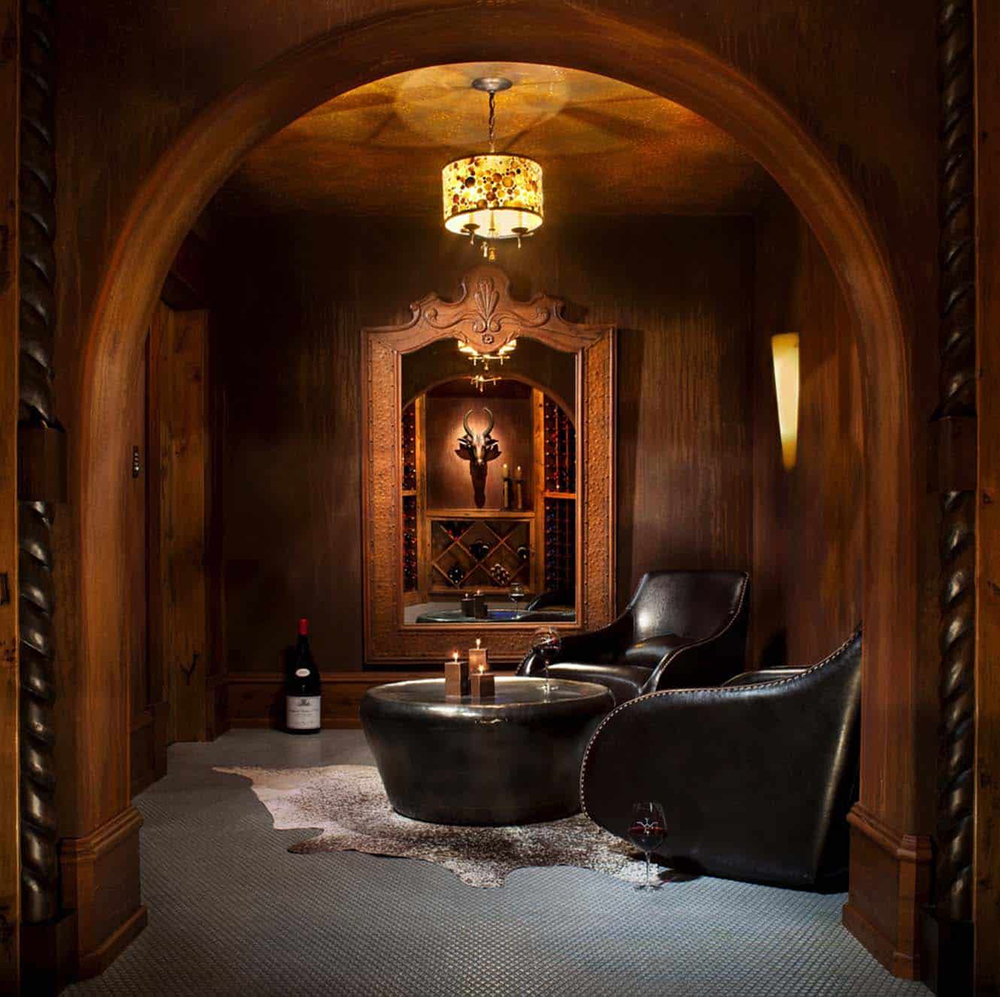
What style do we choose for the winery
Once the problem of thermal insulation and waterproofing of the space is solved, we can think about the style of arrangement, on which the choice of the type of finish and the furniture will depend later. Although rustic, classic and traditional styles are by far preferred in terms of arranging wineries, they have become popular in Romania and Western-inspired ones, such as industrial, modern or eclectic style, the latter taking over and mixing elements from various styles, even opposite. As an example you can take the Panciu Domains Winery (arranged by our Interior Creative studio), where the beneficiary wanted a mix, between the rustic, industrial and slightly Provencal style.
Usually, the winery is part of an ensemble, a construction built in a certain architectural style, which partially conditions the choice of the style of arranging the winery so that the whole concept is unitary.
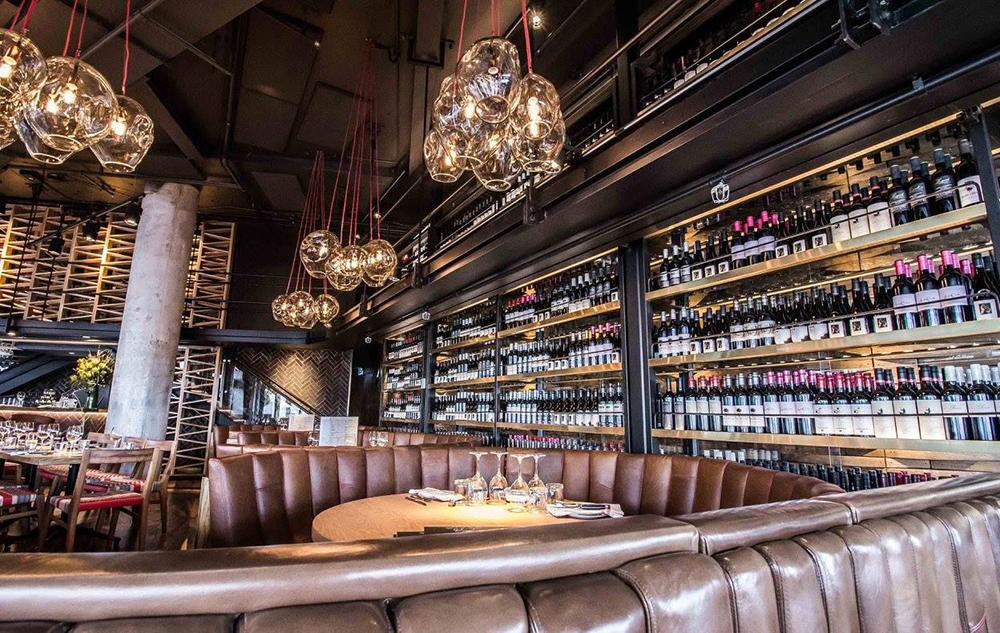
What finishes do we choose for the winery
As mentioned above, the most popular winery styles are the rustic and traditional style, and the explanation is simple given the primary role of the winery and its construction in rural areas, ie where wine was produced by farmers. Natural stone and wood were the main materials for finishing and arranging the wineries and still continue to be at the top. Natural stone is chosen not only for aesthetic but also practical reasons: it offers durability, resistance to time and mechanical stress, resistance to typical environmental factors, which makes it a very advantageous choice. For floors we recommend granite, slate, travertine and even marble, but you can also consider other solutions such as sandstone, cork or wood, in principle also natural materials. As for the walls of the winery, their full coverage with stone ensures the best conditions for storing wines, while complementing the rustic or traditional atmosphere of the space. There are solutions for other stylistic approaches, such as industrial style. In this case, the concrete walls can be plastered with decorative paint to create the desired ambiance, and for the floor you can choose apparent concrete. Other options that can be considered for finishing the cellars are artificial stone, exposed brick and ceramic tiles.
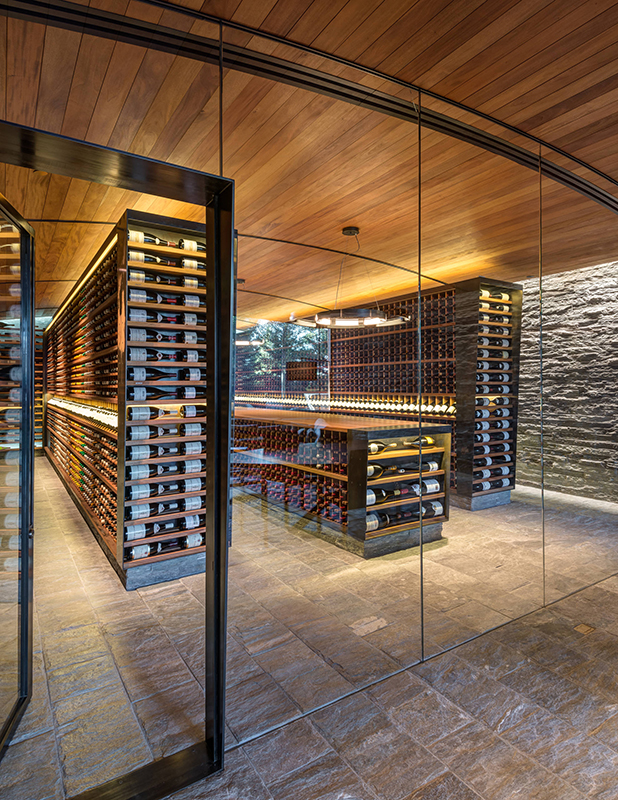

What furniture do we use for the winery
As in the case of finishes, the choice of furniture is closely related to the style of arrangement of the winery and the chosen finishes. When we refer to furniture, we include both the wine support furniture and the adjacent or additional furniture (bar area, etc.). If pre-treated, wooden furniture can be used, especially in a rustic or traditional wine cellar. A very good option is the MDF furniture, wood finish, because it resists moisture well and integrates perfectly into a modern wine cellar. The supports and, in general, the metal elements are welcome both in a rustic cellar, but also in one of industrial inspiration.
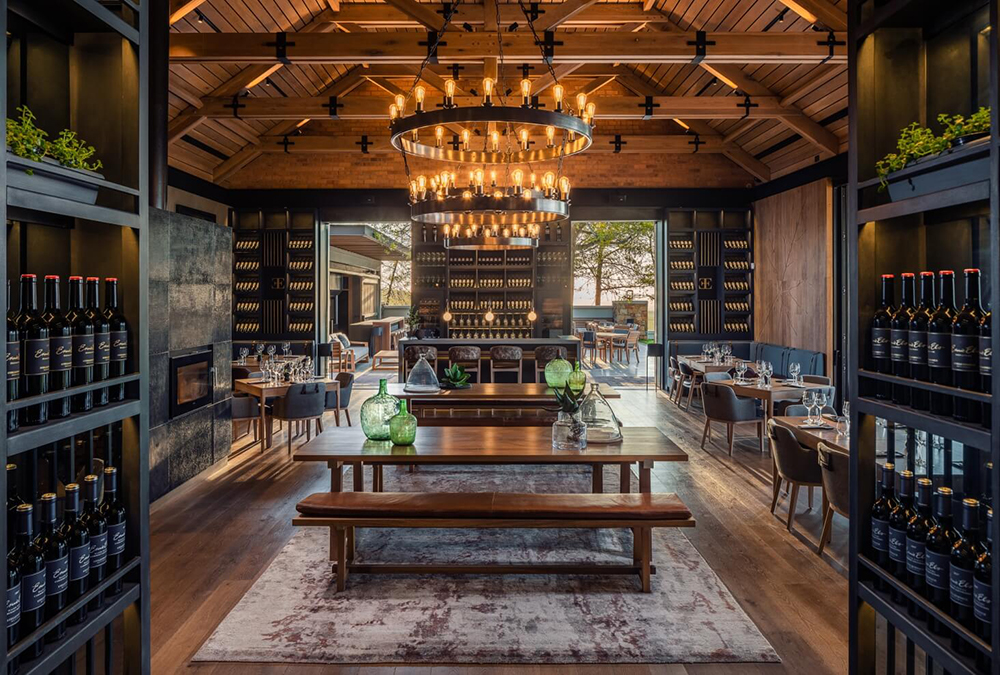
What type of lighting do we use in the winery
The wine likes the dark, therefore strong lighting must be excluded from the start, especially in the wine storage area. Lighting fixtures that diffuse a dim, dim light, either on the ceiling or on the walls (chandeliers, chandeliers, sconces, lamps, etc.) are recommended. In cellars with walls covered with exposed brick, lighting fixtures with a vintage design are effective, because they will create a special atmosphere.
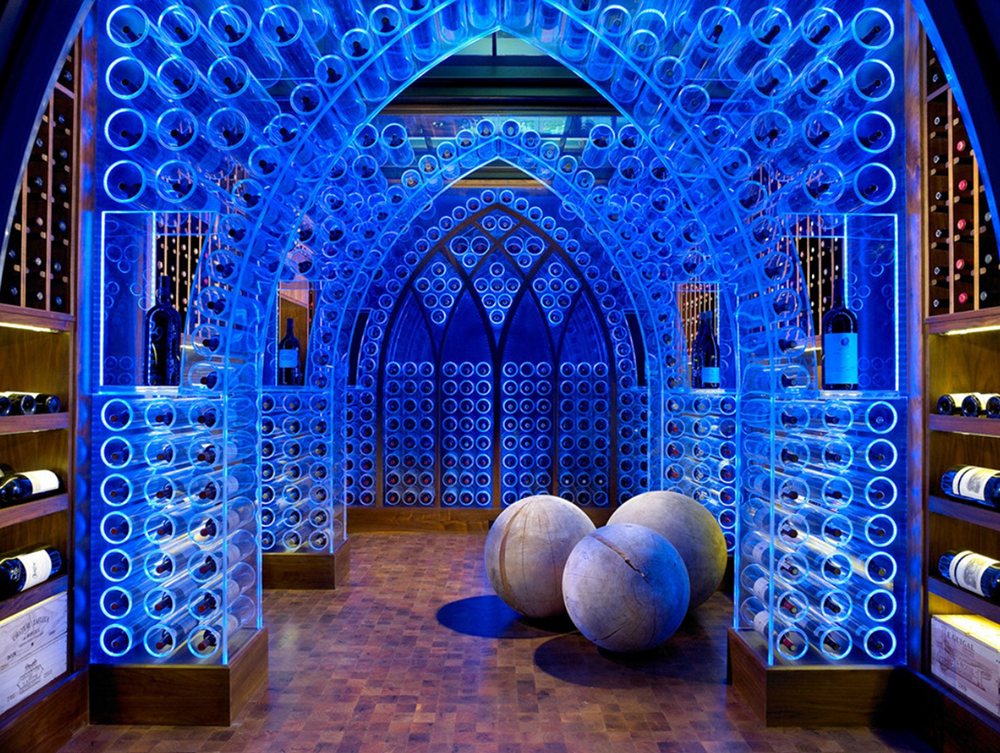
The winery as a multifunctional space for attracting tourists
Today, winery owners attract tourists through an extensive range of services, offering them a complete experience, from accommodation in winery-style establishments with a restaurant included, to creative entertainment options (adult relaxation areas, playgrounds for children, swimming pool, tennis court, etc.) and even for business (event rooms, conference rooms, spaces adapted for team buildings). In other words, the beneficiaries create real resorts with multiple facilities for various activities, in which the winery is only part of a rich and unique experience.
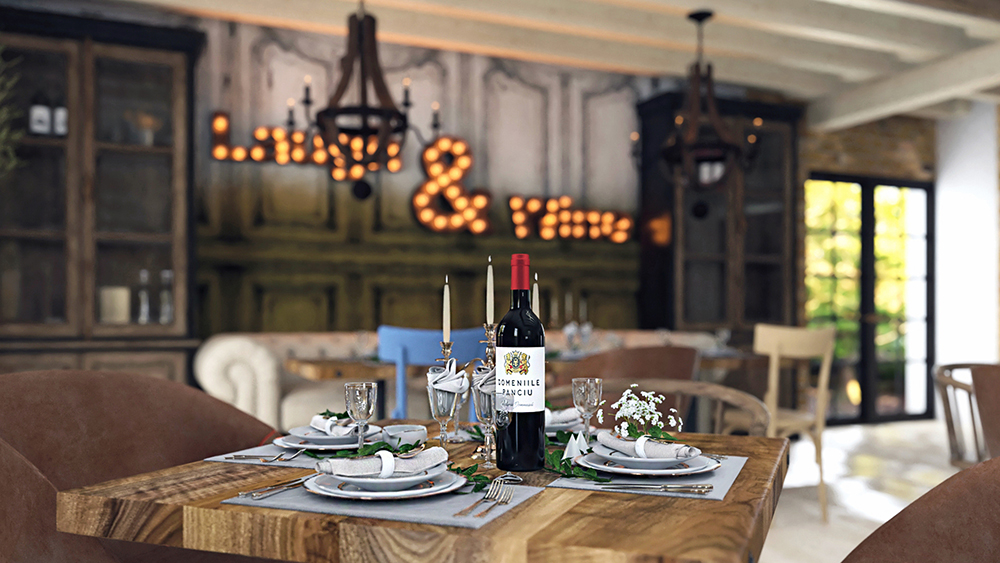
Project Creativ Interior – Restaurant Domeniile Panciu
I hope the above information will help you make the best decisions when starting a winery project. And if you need professional advice, we are at your disposal, contact us here. aici.
Article written for Horeca Romania..
Photos: Portfolio & Pinterest

